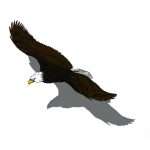The Colorado Geographic Naming Advisory Board is considering a proposal to rename Kit Carson Mountain because of the violence carried out by Army officer Christopher Houston “Kit” Carson against several Native American tribes.
Kit Carson Mountain is the official name for a cluster of three peaks that rise above Crestone in the Sangre de Cristo range. Columbia Point, the farthest east of the three, sits at 13,986 feet. Challenger Point, the peak closest to Crestone sits at 14,087 feet, and the middle peak, which sits at 14,171 feet, remains officially unnamed.
The proposed name change, which was submitted by Ryan Clement, recommends Frustum Peak as a replacement for Kit Carson Mountain, but doesn’t suggest a name for the middle/highest peak. A “frustum” is a flat-topped cone or pyramid, which presumably refers to the flat top of Kit Carson Mountain visible from Crestone, which some locals refer to as Challenger or Crestone Peak.
Established in 2020 by Governor Jared Polis, the Colorado Naming Advisory Board was created to assist the United States Board of Geographic Names (USBGN) in evaluating proposals concerning name controversies and proposed name changes to geographic features in the state. The most recent proposal to rename Kit Carson Mountain is not the first, but it is unique in that it specifically references the controversial legacy of Carson.
Carson was a trapper, explorer, guide and Indian agent who served in both the Mexican-American War and the Civil War. He first gained recognition in the 1840s as a guide for explorer, politician and military officer John C. Frémont, helping Frémont publish commentary about their journey along the Oregon Trail. Carson later assisted Frémont in defeating the Mexicans in the Conquest of California during the Mexican-American War, and participated in massacres against the Wintu and Yana tribes on the Sacramento river, and against the Klamath tribe near Klamath lake.
During the American Civil War, Carson led a regiment of mostly Hispanic volunteers to fight the Confederates and protect New Mexico in the Battle of Valverde. In the 1860s, Carson followed orders to kill or capture members of the Navajo, Apache, Kiowa, and Comanche tribes. Most notably, after destroying Navajo food sources and poisoning their water supply, Carson led the Long Walk of the Navajo, forcing some 8,000 Navajo to walk 300 miles from Fort Canby in Arizona to the Bosque Redondo reservation in New Mexico. Hundreds of Navajo died from cold and starvation, or were killed for falling behind.
Despite the objective brutality of these actions, Carson’s relationship with the Native population as a whole was surprisingly nuanced. Carson married two Native women, and spoke several Native languages.
While he did ultimately follow orders given to him by Major General Carleton, he initially refused to carry out the attack against the Navajo, and expressed concern about the brutality of the Long Walk, demanding that the Navajo be supplied with food and clothing along the way.
In a 2008 article in The Crestone Eagle, local resident and weatherman Keno Menechino wrote extensively about the 100-plus-year controversy surrounding the name of our local mountain, which extends beyond Carson’s contentious legacy. In 1906, the USBGN was asked to determine the official name of the local mountain, as there was some confusion about whether or not it was called Kit Carson Peak or Frustum Peak. Strangely, locals had only ever called the mountain Crestone Peak, and no one is quite sure why the other names were the only two being considered.
As Keno explained, “During field work to revise its maps in the late 1960s, a US Geological Survey employee was supposedly told by then mayor of Crestone, Earl Williams, that the entire massif containing three peaks was referred to by local residents as Kit Carson Mountain and that locals did not discern between the peaks.” However, after conducting extensive research and interviewing local residents, Keno could not find a single old-time resident who could corroborate this. Even John Hayes, Williams’ stepson insisted, “There is no way my dad ever said that. He called it Crestone Peak.”
Ultimately, in 2008, Keno, along with the Crestone Board of Trustees, submitted an official proposal to the USBGN to change Kit Carson Mountain to Mount Crestone, and also proposed that the highest, unnamed peak of the mountain be called Tranquility Peak. At the time, the board decided to leave Carson’s contentious legacy out of the proposal, and focused instead on well-documented history that locally, the mountain had never been referred to by Kit Carson’s name.
Now that the name of the mountain is once again up for revision, Crestone Trustee Kizzen Laki volunteered at the Board’s latest meeting to write a letter to The Colorado Geographic Naming Advisory Board proposing that the mountain be called Mount Crestone as opposed to Frustum Peak. While renaming Kit Carson Mountain was met with enthusiasm during the Naming Advisory Board’s last meeting, no one expressed emphatic support for the name Frustum Peak. Dr. William Wei, a Naming Advisory Board member said, “[Frustum Peak] isn’t offensive, but it doesn’t seem to resonate. I propose that we make it a placeholder until we come up with a more appropriate name that might actually honor a worthy person or event.”
The US Forest Service consulted the Navajo Nation, who also expressed support for the name change overall, but did not provide a suggestion for a new name in their official statement. “The Navajo Nation fully supports renaming Kit Carson Mountain. Namesakes are powerful, especially when they bestow honor and legitimacy to people like Kit Carson. He led a brutal campaign against the Navajo resulting in deaths of countless Navajos, and later to the removal and incarceration of Navajos at Fort Sumner.
Memorializing his name in history books, statues and prominent places commemorates the forced removal and subjugation of the Navajo and other tribes. We cannot rewrite history, but we can strive to correct it by recognizing who and what we consider significant as Indigenous people. Supporting Kit Carson Mountain’s name change compels us to understand our history and to use it to inform our present. Changing names at the federal level is a first step toward examining racist legacies and becoming more inclusive, optimistically enabling meaningful change elsewhere.”
In a statement to the Valley Courier newspaper, Saguache County Commissioners also supported the name change without suggesting a replacement. “Kit Carson was noted for his bravery in settling the West, however, he was involved in the massacres of indigenous peoples and suppression of the Apache and Diné among others. This genocide should not be celebrated. I would be in favor of a rename of the highest peak, while consulting the community of Crestone and the Ute and Diné people,” said Commissioner Liza Marron.
In 2011, the proposal set forth by Keno and the Crestone Board of Trustees to rename the mountain was rejected on account that Mount Crestone could be confused with two peaks to the south, officially named Crestone Peak and Crestone Needle. “It’s way past time to change the mountain’s name,” Keno said in a recent interview with The Crestone Eagle. “Our proposal should have been accepted in 2008, but now that the country finally understands that we can’t name mountains after possible war criminals, I wouldn’t be surprised if something gets changed this time around. Almost everyone in town has always supported this.” With renewed interest and motivation to remove Kit Carson’s name, Laki and the board hope the Geographic Naming Advisory Board will reconsider their rejection of the 2008 proposal and take into account the well-documented history and preference of the local community.
To read more of Keno’s research on this topic, visit:
www.keno.org/kenos_home_page/mount_crestone.htm


